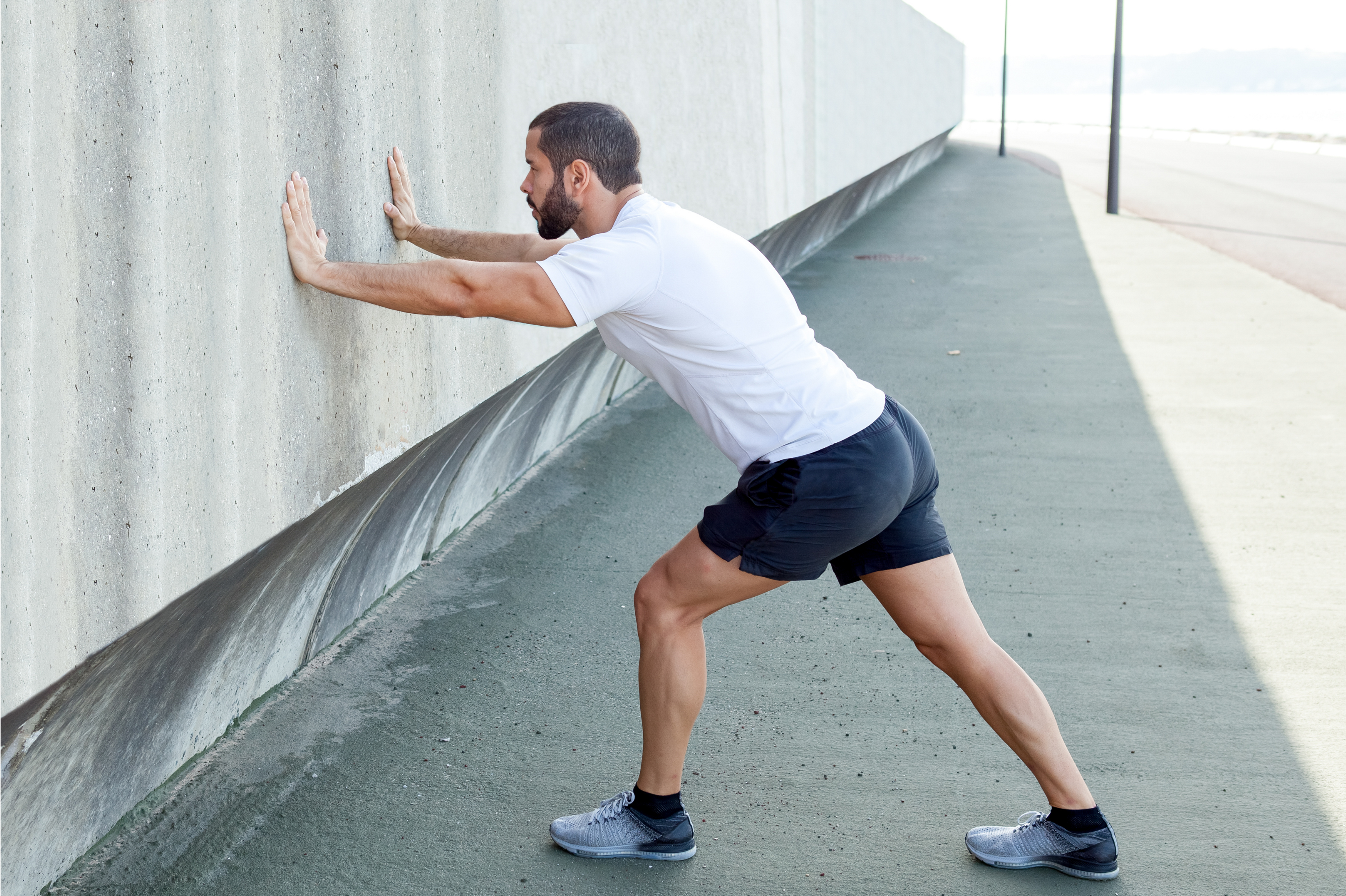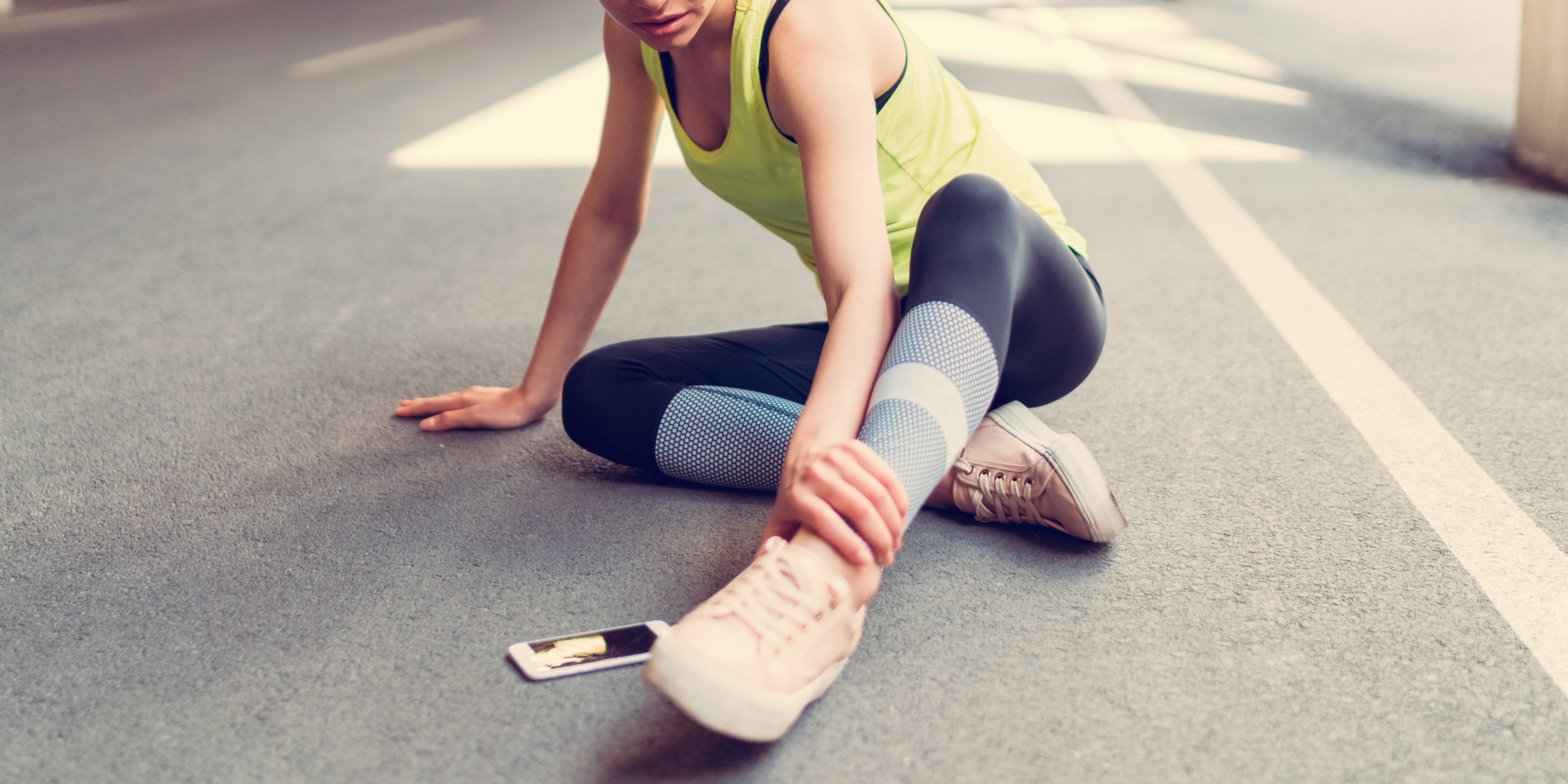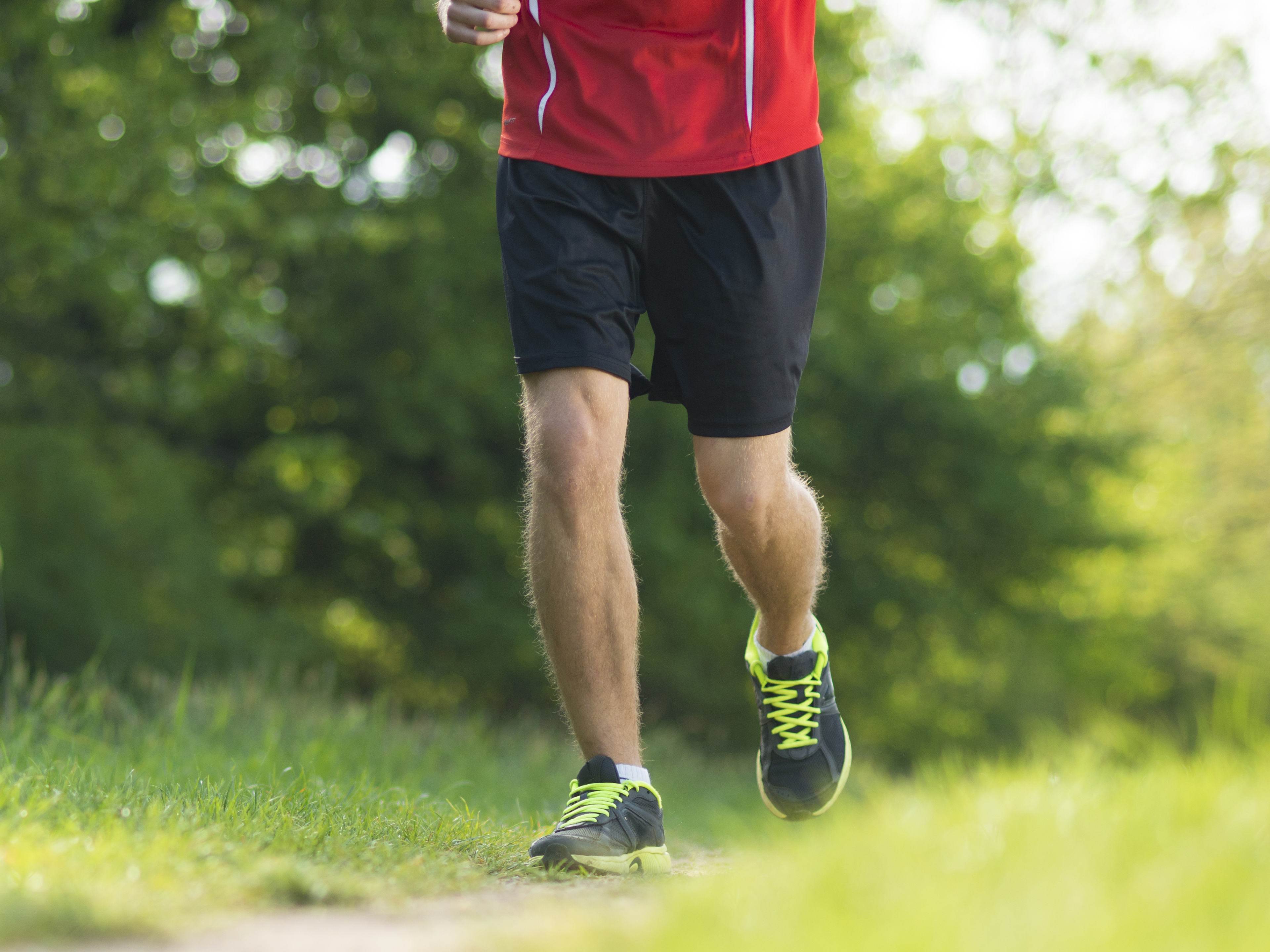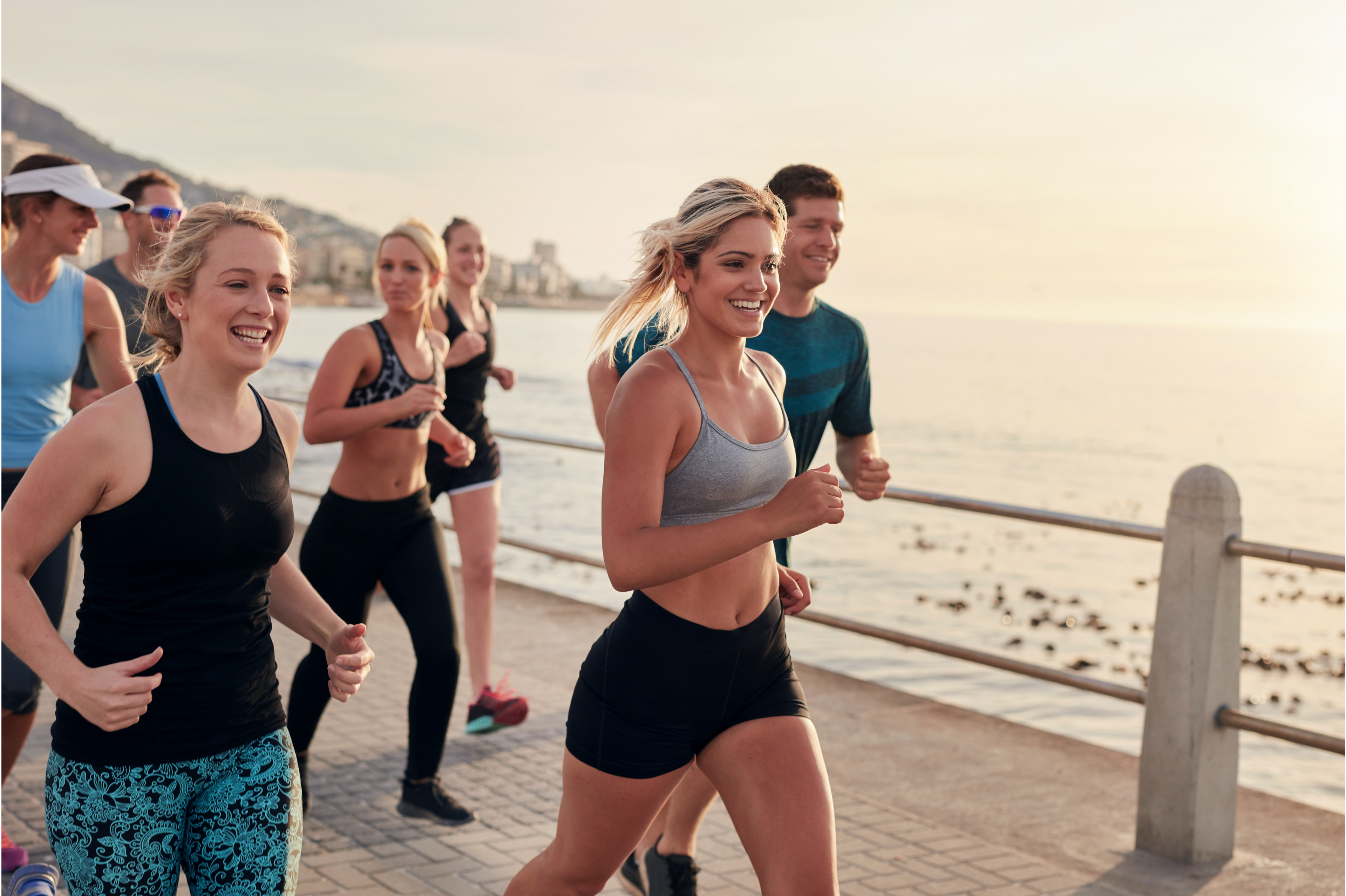The best calf stretches runners can do - Why, how, and common pitfalls to avoid
How your calf muscles work (and stretch)
Understanding calf structure and function
Your calf muscles are situated on the back of your lower leg and consist of the gastrocnemius muscle (upper calf) and soleus muscle (lower calf). The Achilles tendon attaches your calf muscles to your heel bone.
Your calf muscles and Achilles tendon work and stretch as a cohesive unit; engaging or stretching one without the other is impossible.
This integral "calf-Achilles complex" helps propel you forward when you walk, run, or jump – these muscles enable you to point your foot or lift onto your toes.
Stretching your calf muscles
Stretching your calf muscles and Achilles tendon involves moving your toes and foot upward, closer to your shin (dorsiflexion).
Targeting different parts of your calf during a stretch
You can target specific sections of your calf muscles by modifying your stretching technique.
Stretch your calves with your knee straight to target the upper part of your calf (gastrocnemius muscle) or with your knee bent to focus on your lower calf (soleus muscle).
Now that you understand these fundamentals let’s look at the benefits of stretching your calves and how it can help you as a runner.
Benefits of calf stretches for runners
Calf stretches offer many benefits for runners. They can boost your running performance and help prevent injuries by:
- Prepping your calf muscles and nervous system before a run
- Enhancing your balance
- Speeding up your calves' reactions to unexpected movements
- Helping you gain and maintain the flexibility you need to run restriction-free
They also serve as a helpful tool to treat common running-related injuries and issues, including plantar fasciitis and calf cramps.
You can do different types of calf stretches, each with its benefits. In the following sections, we'll explain the differences between each so you can get the most out of your calf stretching routine.
Static calf stretches for runners
What is a static calf stretch?
A static calf stretch involves taking your calf muscles into a stretched position and holding this position for a period of time, usually between 30 and 60 seconds.
Benefits of static calf stretches
Static calf stretches can help relax your calf muscles and improve their flexibility.
Exercise increases muscle tone, so running can cause your calf muscles to tighten. If you don’t regularly stretch your calf muscles through their full range of motion after a run, this increased muscle tone can reduce your calf flexibility.
Common pitfalls of static calf stretches
Research shows that static stretches may reduce your running performance if you:
- Hold the stretch for too long, or
- Don’t follow them up with dynamic stretches when warming up.
Pushing too hard into a static stretch or holding it for too long can also cause overstretching injuries like insertional Achilles tendonitis.
Weak calf muscles can contribute to running-related calf tightness, so stretching alone may not be enough to reduce your discomfort. Regular calf strength training alongside a calf stretching routine can help.
Examples of static calf stretches
Dynamic calf stretches for runners
What is a dynamic calf stretch?
A dynamic calf stretch differs from static calf stretching because it involves repetitively moving your calf muscles in and out of a fully stretched position without holding it for longer than a brief pause (fewer than 5 seconds).
You also actively contract your calf muscles during a dynamic stretch, which isn't the case during a static stretch.
Benefits of dynamic calf stretches
Dynamic calf stretches can improve your calf flexibility and wake your nerves and muscles up – preparing them for the quick, forceful contractions and reactions they need to be able to perform while you run.
Common pitfalls
Dynamic calf stretches can help prevent injuries and improve running performance, but doing too many of them before a run can tire your calf muscles out, reducing your running performance.
Examples of dynamic calf stretches
Should I run with tight calves?
If your calves are still tight from a previous training session, it's usually a sign they’ve not recovered fully yet.
Doing short, easy runs when your calves are tight may be OK, but high-speed, intense, or long runs can predispose you to injuries like a calf strain or Achilles tendonitis, so it’s best to avoid them.
When NOT to stretch your calves?
If you have a recent calf strain or tear
When you strain a calf muscle, you tear some of the muscle fibers, making your calf vulnerable to further injury. That’s why doing strong calf stretches during the first few weeks after a calf strain can worsen your injury.
In our previous article, Stretches for calf strains (and better alternatives), we explained how and why this happens in more detail.
Achilles tendonitis or tendinopathy
Calf stretches are often prescribed as a treatment for Achilles tendonitis, but the current research doesn't support this advice. Two main reasons include:
- Excessive calf stretching has been shown to cause Achilles tendonitis.
- Injured tendons often have a delayed pain response to stretching – meaning, although you may feel a sense of relief while stretching your Achilles, it can increase your pain later in the day.
Need more help with an injury? The Exakt Health app contains exercise-based rehab plans for calf strains and Achilles tendonitis. It uses your feedback to tailor the exercises, guiding you safely from when you first get injured back to running.
Now that you know the different types of stretches, their benefits, and when to avoid stretching, let’s look at how to stretch your calves correctly.
How to stretch your calves correctly
Knowing how you stretch your calves or choosing the right type of stretch to do will vary depending on your unique situation or the specific reasons you're stretching (your goals).
Here are the best ways to stretch your calves to suit common runners’ goals.
Best calf stretches before running (when warming up)
Main goal: To prepare your calves for peak performance by ensuring they can move through the range they need for running while activating the muscles and nerves.
The best type of stretch for this goal: Dynamic calf stretches
Examples of the best calf stretches when warming up:
Calf stretches after running
Main goal: To ease discomfort, relax tight calf muscles, and restore and maintain flexibility after a run.
The best type of stretch for this goal: Static calf stretches
Examples of the best calf stretches after running:
Best calf stretches for cramps
Main goal: To relax your calf muscles and reduce muscle spasm.
The best type of stretch for this goal: Static calf stretches (holding the contraction for at least 30 seconds or up to 1 minute)
Example of the best calf stretches for cramps: Standing calf stretch
The injury prevention plan for runners in the Exakt Health app includes all these stretches and core and leg strength workouts. It also gives you tips on exercising correctly and avoiding common pitfalls. You can download and try it for free from the app store.
Conclusion
Calf stretches, when done correctly, can help improve your running performance and reduce your risk of injuries.
Dynamic calf stretches are an excellent addition to a running warm-up, activating your muscles and nerves and preparing them for the activity ahead. Conversely, static stretches can help cool your muscles down and maintain your calf flexibility after a run.
Remember to avoid overstretching or stretching if you’ve had a recent calf strain or an Achilles tendon injury. And, lastly, incorporating a balanced calf stretching and strengthening routine into your running training will help you achieve better results, remain injury-free, and reach your goals seamlessly.



